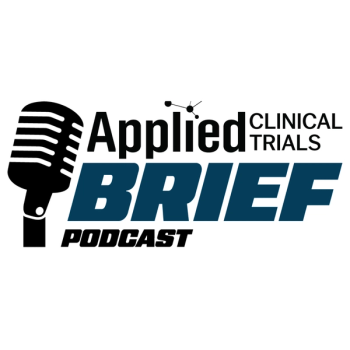- Applied Clinical Trials-10-01-2025
- Volume 34
- Issue 4
After the Trial is too Late: The Case for More Active Use of Patient-Reported Outcomes in Oncology Studies
Key Takeaways
- Active use of PROs during trials allows for real-time patient care interventions and enhances safety signal detection.
- Ethical obligations and potential clinical benefits support the active use of PRO data, aligning with practices in other therapeutic areas.
Advancing toward more meaningful use of PRO data by making it systematic, transparent, and built into trial design.
Patient-reported outcomes (PROs) are widely used in oncology clinical trials to capture patients’ own perspectives on symptoms, functioning, and quality of life. These data are usually collected at multiple timepoints, sometimes weekly or even daily, requiring ongoing effort and engagement from study participants.
In most oncology trials, PRO data are not looked at while the study is ongoing. Patients are reporting their current health status through questionnaires, often describing symptoms or impairments that can be clinically relevant at the time of PRO assessment; yet this information is typically not accessed until after the trial ends. By then, any opportunity to respond to the patient’s needs has passed. Instead, PROs are usually analyzed after trial completion and only at the group-level, often months or years later.1 This article makes the case for more active, patient-level use of PRO data during oncology trials.
What active PRO use means in practice
Active, in-stream use means reviewing PRO data during a trial at the individual patient level, scoring patients’ questionnaires, and displaying the results to the study team. This allows clinical teams to identify impairments or symptoms that may or may not be treatment-related, screen for supportive care needs, and use PROs as a supplementary source of information to help identify potential adverse events.
In the broadest sense, active PRO use refers to a structured process for reviewing and, when necessary, responding to PROs. This can include predefined thresholds for what constitutes a conspicuous result and corresponding response pathways. For example, a report of severe diarrhea could trigger rapid assessment for dehydration and supportive medication, while uncontrolled pain might prompt adjustment of analgesics or referral to a pain specialist.
Why active PRO use matters
There are strong ethical reasons to use PRO data more actively and for individual patient benefit. Foremost is the obligation to make the most use out of the data that patients share with us. The questionnaires completed by trial participants contain relevant information about their current health status, which can inform clinical care. Many trials use instruments that are also employed in routine care. For example, the EORTC QLQ-C30—the most widely used questionnaire in oncology trials—is commonly applied in clinical practice for symptom and quality of life monitoring.2,3 Not making use of these data during the trial means missing an opportunity to support patients and raises questions about whether the data are being used to their full potential.
In a clinical trial, other forms of health data, such as laboratory values or imaging results, are typically reviewed as they are collected. Conducting blood tests and deferring review until after trial completion would rarely be considered acceptable. If we regard PROs as meaningful indicators of patients’ health status, a similar expectation of timely review seems reasonable.
From a clinical development and scientific perspective, reviewing PROs during a study could allow earlier detection of safety signals and faster identification of issues that might benefit from supportive care. It could also help improve PRO completion rates, which are a well-recognized challenge in many trials, by motivating patients to continue reporting if they see that the data they share have consequences for their care.
The concept of acting on PRO “alerts” such as severe symptoms or distress that require immediate attention is not new. It has been discussed for more than a decade,4,5 and that, potentially, structured PRO review as part of a clinical trial could have additional methodological benefits, such as improving consistency in common terminology criteria for adverse events grading for subjective symptoms.6
Current practice and missed opportunities
Evidence suggests that active PRO use in oncology is rare. A review of 117 gynecologic cancer trials found only one (non-drug) trial where PRO data were actively reviewed.7 In an ongoing EORTC Quality of Life Group project, similarly low rates among a larger sample of trials were observed (publication pending).8
However, the lack of references for active PRO review in the literature does not mean that it does not occur. Already in 2016, a UK survey of trial personnel across different therapeutic areas found that many research staffencountered concerning PRO results and sometimes took remediatory action,9 though these actions were often undocumented due to system limitations and a lack of formal guidance on management of concerning results. In other words, this shows that PRO data are acted upon, but in an ad hoc, non-standardized way that risks co-intervention bias and potentially undermines trial integrity.
Learning from other therapeutic areas
How might active PRO use look in practice? Other therapeutic areas have more closely integrated active PRO use into trial designs, showing that it can enhance scientific rigor, clinical relevance, and patient-centeredness.
For example, in rheumatoid arthritis, where PROs are often the primary outcome and are more closely monitored by the trial team. Another striking example is the BNT162b2 COVID-19 vaccine trial, which led to regulatory approval and featured daily, self-reported reactogenicity events.10 These data were regularly reviewed by study investigators who could, if necessary, contact patients and coordinate protocol-defined clinical action. Importantly, the PRO data were not only used to support participant safety but also directly contributed to the trial’s safety analysis.
For oncology, regulatory authorities have so far taken a cautious stance. In a 2018 perspectives paper, representatives from major US regulatory and oversight bodies, including the FDA, acknowledged the debate about whether PRO data should be actively reviewed during clinical trials. They emphasized that, for cancer studies, PROs are not considered safety data because they lack clinical interpretation, but noted that active review is possible, for example to support adverse event ratings.11 At the same time, the paper emphasized the value of PRO data in complementing our understanding of toxicity and tolerability.
Barriers, concerns, and solutions
Active PRO review as part of a trial may present some challenges; methodological issues such as potential bias; operational hurdles such as integrating alerts into trial systems; and cultural barriers such as the perception of PROs as secondary rather than core trial data. Additionally, implementing PRO alerts would likely require more advanced IT solutions and coordination with electronic clinical outcome assessment vendors.
Whether PRO data are actively reviewed also reflects a broader question of trial design philosophy. Pragmatic studies aimed at assessing real-world benefit are more consistent with incorporating active clinical use of PROs, especially as PRO monitoring becomes more common in routine clinical care,3 whereas explanatory trials focused on maximizing internal validity align more closely with collecting PROs passively without intervening.
In the latter case, it is essential to avoid unstructured review of PRO results and make it explicit to both patients and site staff that responses will not be reviewed until after the trial. This helps avoid ad hoc interventions that could compromise trial integrity.
A way forward
Solutions from other therapeutic areas offer a starting point for oncology. These include pre-specified alert thresholds and response plans written into protocols, staff training on PRO alert management, and clear systems for recording any actions taken so that unreported interventions are avoided. If active PRO review is done, it needs to be done with validated measures that are fit for purpose and with validated cutoffs for alerts.
Oncology trials may take a stepwise approach to implementing active PRO use. Possible strategies include defining alert rules for critical symptoms such as severe pain or suicidal ideation and providing patients with summaries of their own PRO scores during the trial. These measures should be embedded in protocols from the outset, supported by clear guidance, and aligned with regulatory expectations.
The PRO-active path
Oncology trials generate rich PRO data, yet too often, these remain untouched until long after the study ends. Failing to use these information that patients actively provide wastes an opportunity to support them in real-time. Because unstructured review already happens, the solution is to make it systematic, transparent, and built into trial design. Other fields show that active use is feasible, and oncology should learn from these examples and move toward more meaningful use of PRO data during trials.
Jens Lehmann, PhD, Health Outcomes Research Unit, University Hospital of Psychiatry II, Medical University of Innsbruck, Austria.
Acknowledgement: The work of JL is supported by a fellowship grant from the EORTC Quality of Life Group (008-2023).
References
1. Reported Outcome Protocol Content and Reporting in Cancer Trials. JNCI J Natl Cancer Inst. 2019 Nov 1;111(11):1170–8
2. Giesinger, J.M.; Efficace, F.; Aaronson, N.; et al. Past and Current Practice of Patient-Reported Outcome Measurement in Randomized Cancer Clinical Trials: A Systematic Review. Value Health. 2021 Apr;24(4):585–91
3. Hubel, N.J.; Vorbach, S.M.; de Ligt, K.M., et al. Sustainability and Time Trends in Electronic Patient-Reported Outcome Assessment in Routine Cancer Care: Systematic Scoping Review and Follow-Up Survey. J Med Internet Res. 2025 Apr 25;27:e69398
4. Kyte, D.; Draper, H.; Calvert, M. Patient-Reported Outcome Alerts: Ethical and Logistical Considerations in Clinical Trials. JAMA. 2013 Sep 25;310(12):1229–30
5. Basch, E.; Wood, W.A.; Schrag, D.; et al. Feasibility and Clinical Impact of Sharing Patient-Reported Symptom Toxicities and Performance Status with Clinical Investigators During a Phase 2 Cancer Treatment trial. Clin Trials Lond Engl. 2016 Jun;13(3):331–7.
6. Wintner, L.M.; Giesinger, J.M.; Sztankay, M.; Bottomley, A; Holzner, B. EORTC Quality of Life Group. Evaluating the Use of the EORTC Patient-Reported Outcome Measures for Improving Inter-rater Reliability of CTCAE Ratings in a Mixed Population of Cancer Patients: Study Protocol for a Randomized Controlled trial. Trials. 2020 Oct 13;21(1):849
7. Madariaga, A.; Sánchez-Bayona, R.; Kasherman, L.; et al. Proactive Assessment of Patient-Reported Outcomes in Ovarian Cancer Studies: A Systematic Review and Call for Action in Future Studies. Int J Gynecol Cancer Off J Int Gynecol Cancer Soc. 2025 Jan 6;ijgc–2024–005883
8. A Critical Review of the Use of Electronic Patient-Reported Outcomes in Cancer Clinical Trials – Developing an EORTC Perspective. EORTC – Quality of Life. 2024.
9. Kyte, D.; Ives, J.; Draper, H.; Calvert, M. Management of Patient-Reported Outcome (PRO) Alerts in Clinical Trials: A Cross Sectional Survey. PloS One. 2016;11(1):e0144658
10. Polack, F.P.; Thomas, S.J.; Kitchin, N.; et al. Safety and Efficacy of the BNT162b2 mRNA Covid-19 Vaccine. N Engl J Med. 2020 Dec 30;383(27):2603–15
11. Kim, J.; Singh, H.; Ayalew, K.; et al. Use of PRO Measures to Inform Tolerability in Oncology Trials: Implications for Clinical Review, IND Safety Reporting, and Clinical Site Inspections. Clin Cancer Res Off J Am Assoc Cancer Res. 2018 Apr 15;24(8):1780–4
Articles in this issue
Newsletter
Stay current in clinical research with Applied Clinical Trials, providing expert insights, regulatory updates, and practical strategies for successful clinical trial design and execution.





